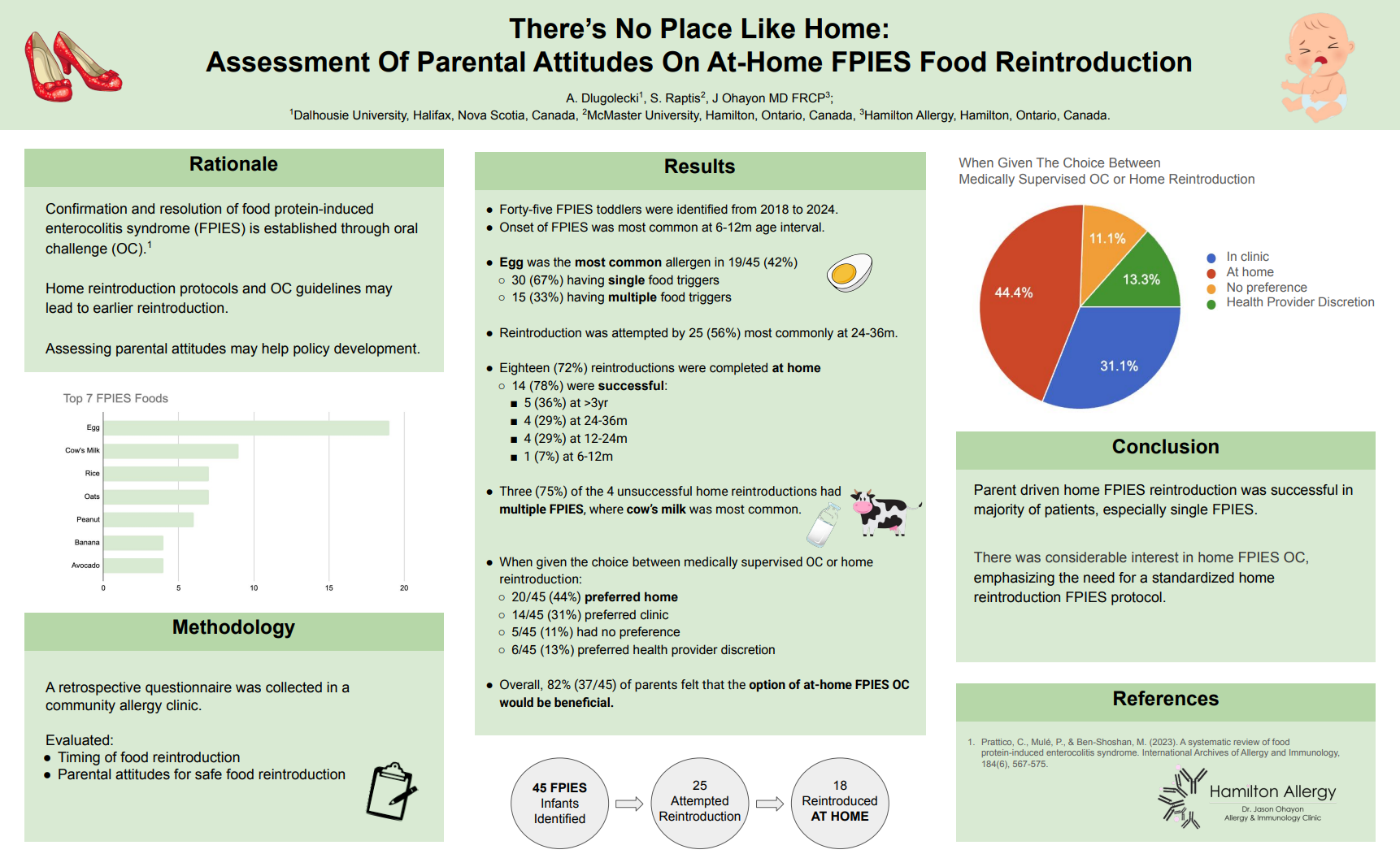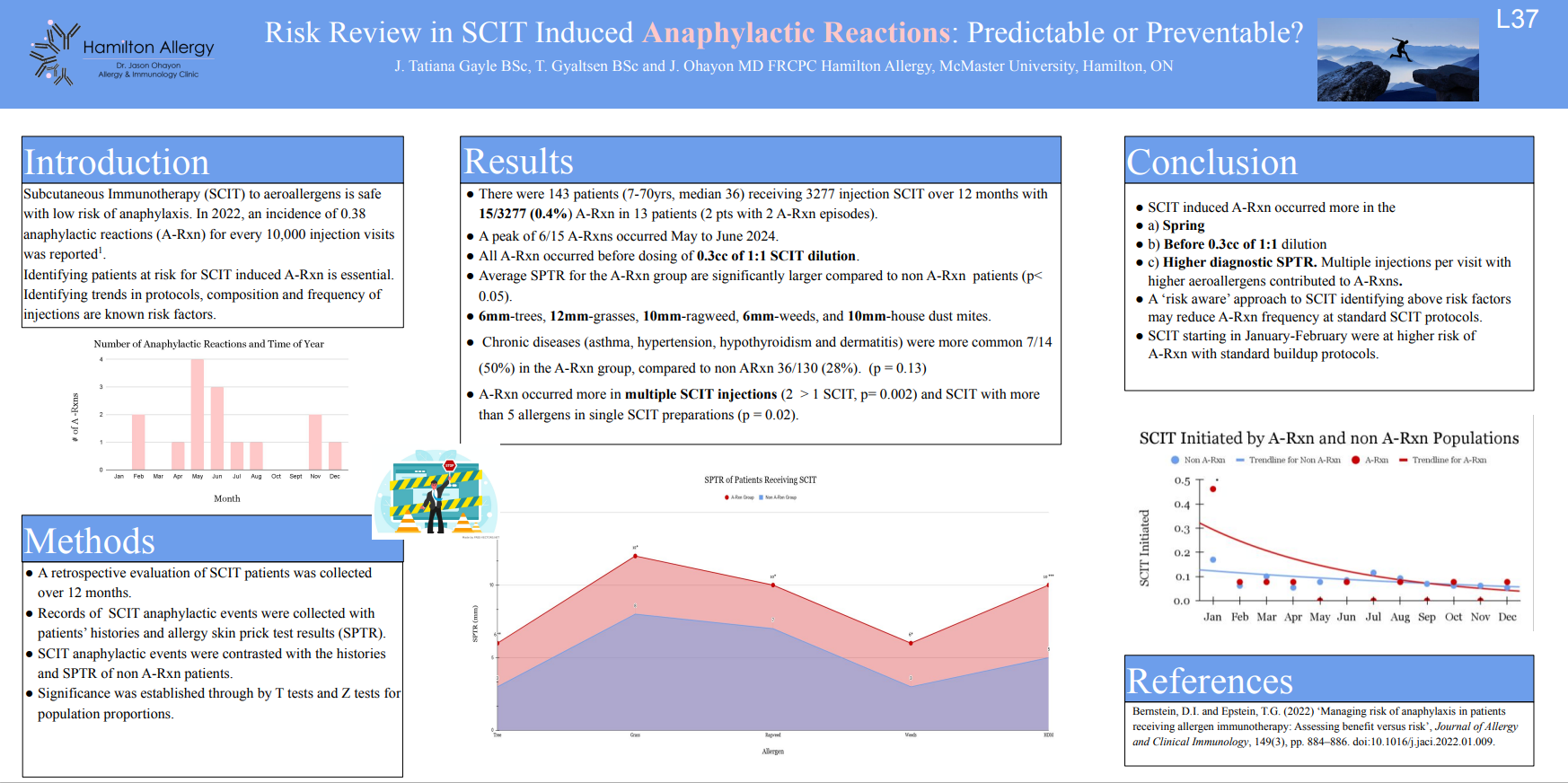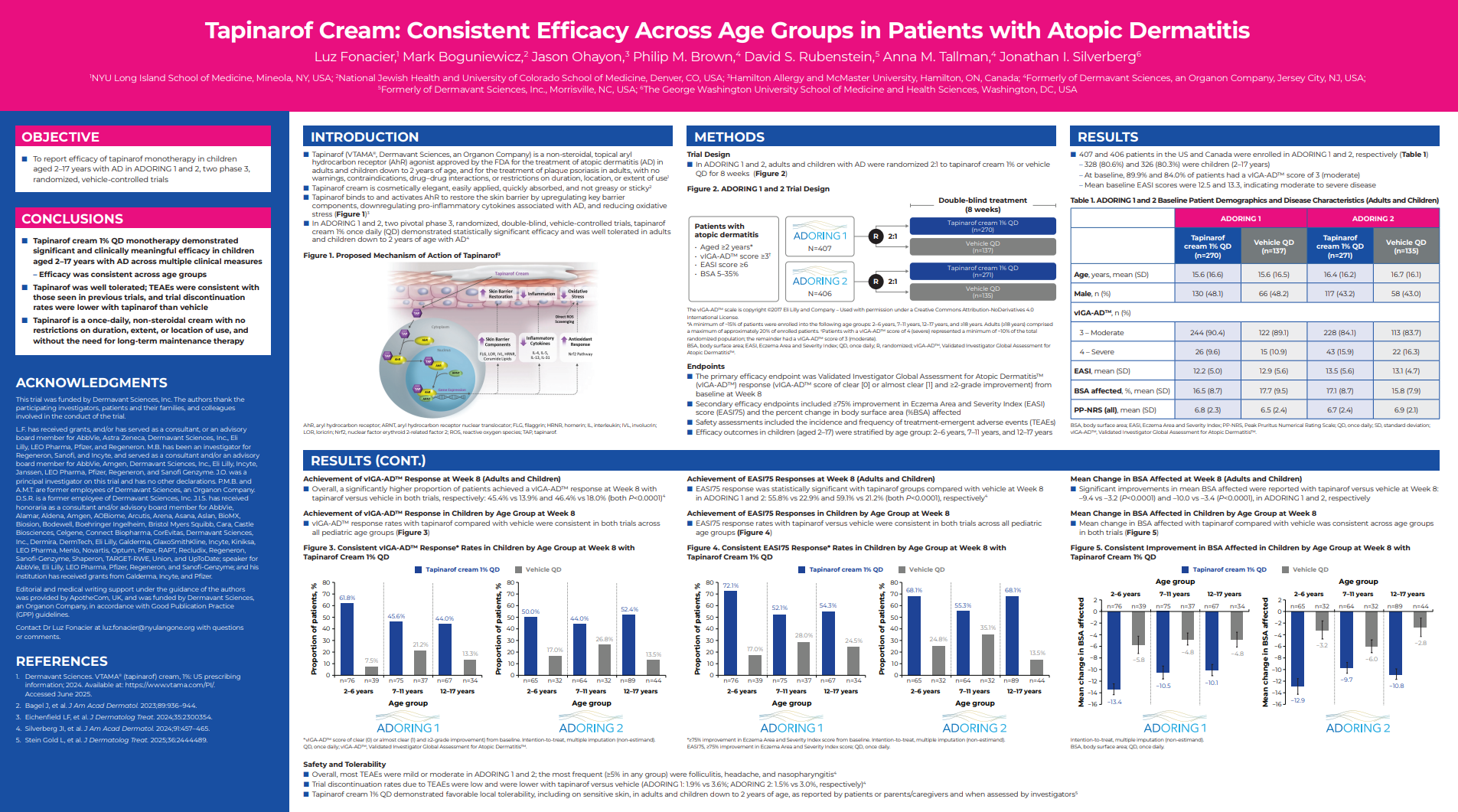
Our Research
Our team at Hamilton Allergy is dedicated to the advancement of research in allergy and immunology. Many members of our team have submitted their own research projects and abstracts to various allergy and immunology conferences around the world. Scroll down to explore some of the abstracts that they have submitted over the years!
2025 Conference Presentations
The American Association of Asthma, Allergy and Immunology (AAAAI) Annual Meeting 2025
Tapinarof Cream 1% Once Daily: Consistent Efficacy Across Disease Severity And Age Subgroups In The Treatment Of Adults And Children Down To 2 Years Of Age With Moderate To Severe Atopic Dermatitis
There’s No Place Like Home: Assessment Of Parental Attitudes On At-Home FPIES Food Reintroduction
Risk Review in SCIT Induced Anaphylactic Reactions: Predictable or Preventable?
Is Lower Better? Upper vs Lower Regional Back Patching in Metal Hypersensitivity - Which Region is More Reliable?
European Academy of Allergy and Clinical Immunology (Annual Meeting) 2025
When Pruritus is Beyond Allergy: Waldenstrom Macroglobulinemia (WM) Presenting as Allergic Itch in the Community
American College of Allergy Asthma and Immunology (Annual Meeting) 2025
Tapinarof Cream: Consistent Efficacy Across Age Groups in Patients with Atopic Dermatitis






